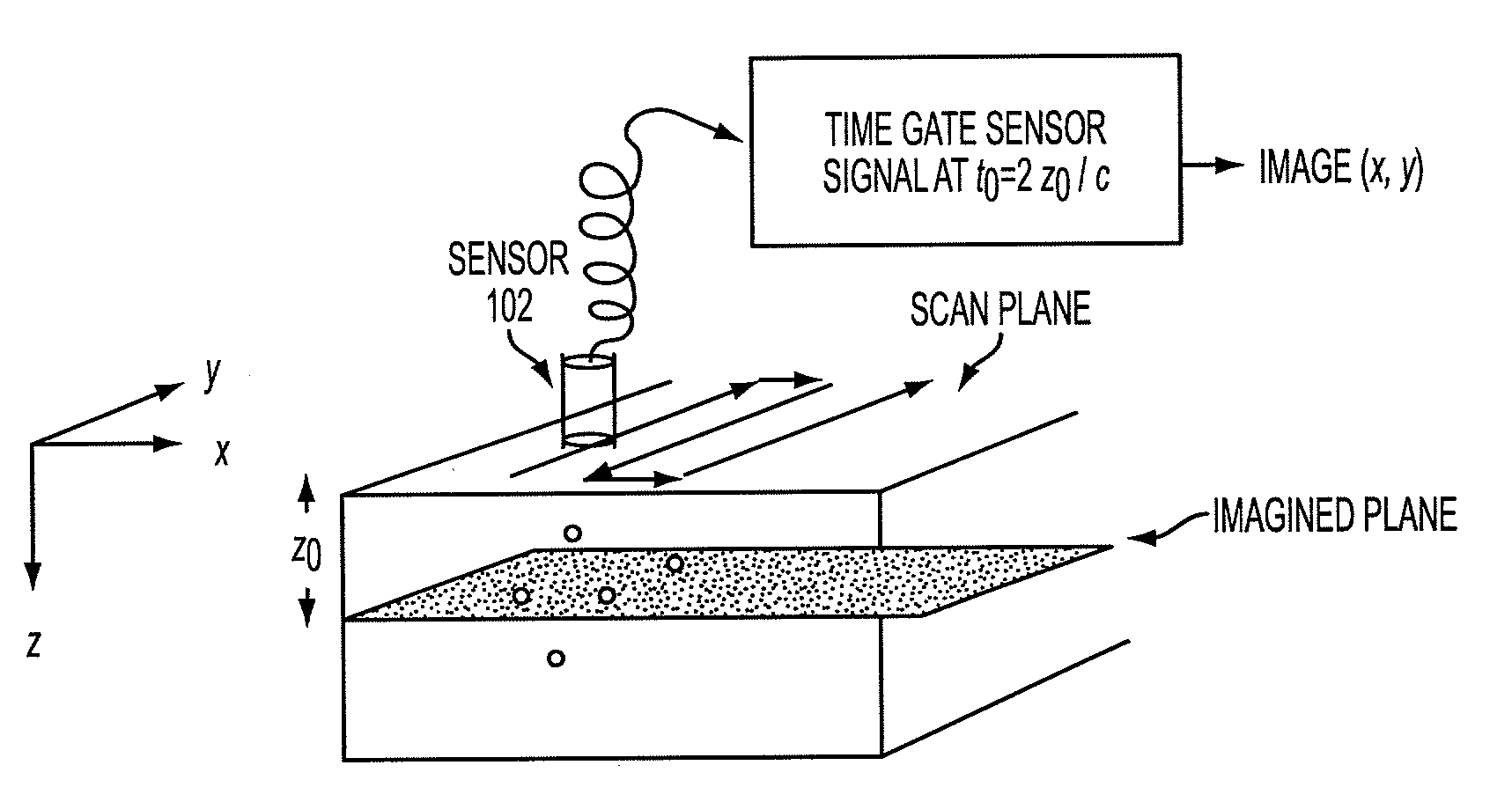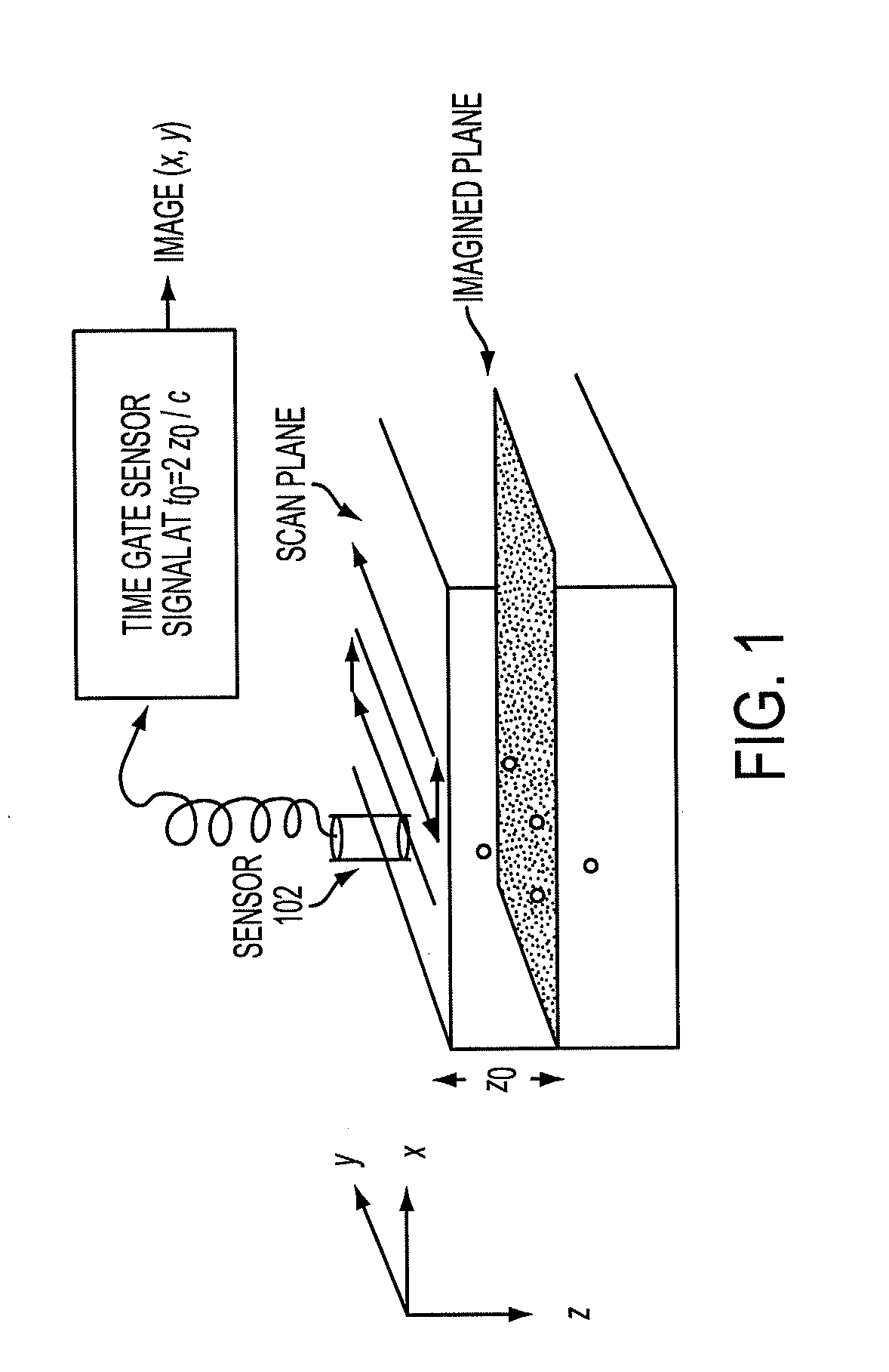Low-cost device for c-scan photoacoustic imaging
a low-cost, photoacoustic imaging technology, applied in the field of imaging, can solve the problems of insufficient reliability of trus, inability to use only as a biopsy template, and inability to demonstrate the efficacy of color and power doppler ultrasound, etc., to enhance the probability of early detection, small size, and low cost
- Summary
- Abstract
- Description
- Claims
- Application Information
AI Technical Summary
Benefits of technology
Problems solved by technology
Method used
Image
Examples
first embodiment
[0047]Tests of the concept will be described. FIG. 5A shows the setup. The image plane was scanned with a 1.5 mm diameter hydrophone. C-scan image plane was 10×25 pixels. The object was 0.2 mm lead pencil illuminated by a laser beam of 2 mm diameter. The laser generated pulses of wavelength 1064 nm with 10 ns pulse width. The point object was located at an object distance (OD) from the lens. The lens had a focal length of 27.5 mm. Hydrophone was located in the image plane at an image distance (ID) from the lens. An acoustic reflector was used to simulate first embodiment of prostate probe.
[0048]FIG. 5B shows a single PA signal and several time gates chosen for C-Scan. C-Scan planar slices at different time gate centers are also depicted in the figure. FIG. 4 shows the C-Scan image of the point source with fixed OD=55 mm and different ID. This demonstrates that the sharp image is located at an ID of 55 mm corresponding to an OD of 55 mm for a lens of focal length 27.5 mm. FIG. 5C dep...
embodiment 800
[0088]A second variation of the third preferred embodiment, shown in FIG. 8E as 800″, is used for breast ultrasound. It can be constructed like the third preferred embodiment 800, except for the omission of the elements concerned only with the photoacoustic effect and for any differences described herein.
[0089]The device 800″ will facilitate the definitive detection of breast cancer and generates C-scan multiplanar images of the breast. An input ultrasound source plane wave generator) is used for ultrasound pulse echo C-scan imaging. Focusing of each plane happens in real time with the help of the acoustic lens. The lens will be large enough for focusing the ultrasound signals reflected from the entire breast volume to propagate towards the receiver. The breast is compresses during the examination and the C-scan images over the entire volume of the breast are produced by the device. The probe including the acoustic window, acoustic lens and the 2d sensor is brought in contact with t...
PUM
 Login to View More
Login to View More Abstract
Description
Claims
Application Information
 Login to View More
Login to View More - R&D
- Intellectual Property
- Life Sciences
- Materials
- Tech Scout
- Unparalleled Data Quality
- Higher Quality Content
- 60% Fewer Hallucinations
Browse by: Latest US Patents, China's latest patents, Technical Efficacy Thesaurus, Application Domain, Technology Topic, Popular Technical Reports.
© 2025 PatSnap. All rights reserved.Legal|Privacy policy|Modern Slavery Act Transparency Statement|Sitemap|About US| Contact US: help@patsnap.com



